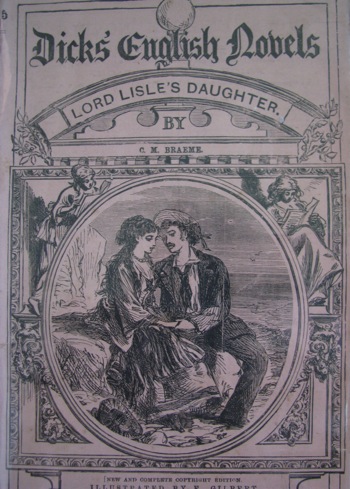The Changing Face of the Abbey Girls
Posted 12 December 2008 in Books by Catriona
And I mean that quite literally.
I have a small number of the Abbey School series: fourteen, in fact, picked up randomly from various sales.
(Fourteen is not many, when you look at the entire list of Abbey School books. And if that list looks impressive, make sure you also look at the so-called Abbey Connectors, or books that share some characters and, occasionally, plots with the Abbey books, but are otherwise distinct. I do wonder, sometimes, how these prolific writers of girls’ school stories—Angela Brazil and Josephine M. Brent-Dyer are the other two who spring to mind—ever found the time to sleep.)
Of course, the Abbey School series are girls’ school stories in only the loosest sense of the word: few of them take place even partly in school. But I’m not concerned with that here.
Nor am I concerned with the connection with early Cistercian monastic life, though my sister-in-law—whose disciplinary focus is the Cistercians—assures me that the titular abbey is a real Cistercian abbey.
Nor am I concerned with Oxenham’s—and her characters’—obsessive involvement in the English folk-dancing revival.
No: I’m being shallow.
I’m only interested here in how the covers change across my issues, from the early Seagull Library reprints (Seagull Library was an imprint of Collins Publishers) to the later Children’s Press editions.
Take Secrets of the Abbey, for example—one of the middle books (in terms of publication date) or one of the later books (in terms of preferred reading order), originally published in 1939. This cover is from a 1951 imprint:

All perfectly ordinary: a little odd and misty, perhaps, but a perfectly ordinary cover.
Strangers At The Abbey, on the other hand—this one is both very late in the preferred reading order and late in terms of publication date: in fact, this 1956 reprint is close to the original 1951 publication:

Now that’s just odd, although it is nice to see the abbey itself actually making an appearance. But what’s with the girl on the left? I can’t figure out if she’s an albino or a dandelion clock. Still, it’s nice to see the illustrator working to overcome the deficit in severely Anglo-Saxon protagonists in 1950s’ children’s books.
1952’s Selma At The Abbey (which comes directly after Strangers in both publication and preferred reading order) reverts to a less frightening cover, in this 1959 reprint:

Although they are looking rather two-dimensional, compared to the 1951 cover of Secrets.
And speaking of two dimensional, there’s the 1961 reprint of 1923’s The New Abbey Girls, one of the earliest of the series in both preferred reading order and publication date:

Seriously, nothing in this environment is three-dimensional, including the abbey and the daffodils. I also want to know how the woman on the left managed to get her hair to look like that.
Still, putting two-dimensional characters on the cover at least warns the reader of the general approach to all except the protagonists . . .
Come the 1966 reprint of 1924’s Abbey Girls Again (which comes immediately after The New Abbey Girls in publication date and preferred reading order), characters are looking better rounded.

Plus, it’s nice to see an homage to the school-story spirit. Nothing says school story like a midnight feast.
But, finally, the gem of my collection: this 1968 reprint of the early Abbey Girls At Home:

Oh, the eyelashes! And the back-combing! And the aggressively flicked hair! And the orange! And the lamp!
(Just quietly, I rather like the lamp.)
This book, I might add, was originally published in 1929. I severely doubt that this was what Oxenham pictured when she thought of her protagonists.














